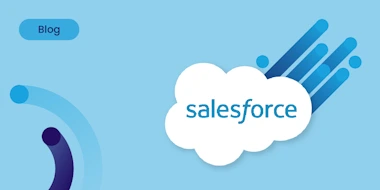Why Has the Staffing Industry Been Behind the Technology Curve?
By Bobby Bartlett, Enterprise Sales Manager, TargetRecruit

Having worked in the staffing industry for over six years now for three different companies, I have acquired a diverse experience with some of the industry-leading enterprise platforms. If I never had the opportunity to sell outside of the staffing software industry, I certainly would not have the same perspective that I have today. Seeing how advanced other companies and industries were with their technology compared to the staffing industry made me take a step back and evaluate why that was the case.
The Difference Between Industries
The information was under my nose the entire time because I could always see that the technology companies I worked for were much quicker to adopt technology than our customers in staffing were. I also took for granted that I was always using Salesforce as my CRM. I have used Salesforce for a majority of my sales career, so when one of the companies I worked for switched from Salesforce to another CRM, I started to realize just what benefits Salesforce offered because I saw them struggle mightily to do things I took for granted, such as: integrate with 3rd party vendors, create and refine reports as an end user, configure the system, and communicate through social collaboration mediums like Chatter. There were a handful of other important things that when taken away had a major impact on our operations and sales productivity as well.
What I will focus on here is how this problem started and how it affects staffing firms at scale. In a follow up blog I will focus more on the specific areas that staffing firms have lagged behind technology-wise and how staffing companies can use these as an advantage to outpace their competition.
Why Staffing Firms Fail with Technology
For starters, it’s important to understand why the problem exists. Integrating with third-party vendors is very difficult, time-consuming, expensive, and can cause continuous issues since with many moving parts, things tend to break. Even with open API access, other software vendors are only going to spend their time building out that integration if there is a worthwhile return on investment in doing so.
Next comes the major fail point: instead of staffing firms finding a way to work with these solutions to provide a seamless environment for their employees to thrive in, they either:
a) buy the tool and never integrate it, creating a disconnected environment requiring dual data entry
b) buy the tool, try integrating it but realize how much work is involved and don’t finish, thus stunting the usability of the tool, or most commonly
c) they just never try to utilize that type of software at all, which can result in a missed opportunity to improve productivity and user experience on your technology stack.
All three of these scenarios are going to have a negative impact on the experience of using your technology stack and thus will decrease the value you will get from your technology investments. I can’t say I really blame CTOs and other technologists though. It is simply too much to handle to have to take on this responsibility on their own to build and maintain these integrations. For example, I saw one company spend a year and half with two full time developers trying to integrate a CRM with a quoting/financial system and still never realized full success doing so.
Why Salesforce Gives Staffing Industry an Advantage
Salesforce.com has benefited heavily from being “first in” and inventing the idea of the AppExchange. As their success continued, more companies hopped on the bandwagon and suddenly, there were over 4,000 plug and play partners ready to fulfill any of the needs that Salesforce’s customer base wanted filled. This today still stands out to me as the main differentiator that has kept Salesforce ahead of their competition because this cannot be replicated overnight. It will be years if not decades until some of the other competitors will have near the amount of options that a company has access to on Salesforce. To provide some perspective on this, while Salesforce has over 4,000 companies in their AppExchange, the largest providers of technology in the staffing tech space have about 70 or 80 partner integrations. In my research for this article looking at 15 other ATS providers, I found the average to be closer to 30 for most in the space. This significant delta accounts for a major loss in opportunity for staffing companies using these systems.
To rehash, I believe the lack of integration with other enterprise technology providers has been the single largest inhibitor for where staffing companies are today on the technology curve. It’s hard for staffing companies to differentiate from one another and I strongly feel that how you take advantage of technology is the biggest opportunity to do so. This means that taking advantage of a system that has access to a large partner marketplace provides you a significant advantage to draw differentiation from those technology options. You may have noticed in the last 5 years there has been a rapidly increasing footprint of Salesforce in the staffing industry through:
a) ATSs built on Salesforce (like TargetRecruit)
b) Utilizing Salesforce as a CRM for sales teams
c) Using Salesforce as a platform to build a homegrown (or partially homegrown) solution on top of (mainly for larger companies).
I predict that as more people see what’s behind the curtain with Salesforce-based solutions compared to the competition, Salesforce will continue to eat up more and more market share.
Read Part Two of this series: Tools Staffing Companies Can Use to Reach or Pass the Technology Status Quo






